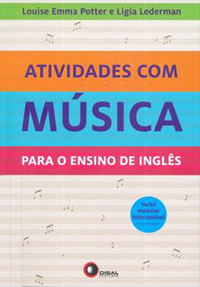PBL is about making connections between what is happening outside the classroom walls and the content. It is about using your student’s skills, so they can realise that they are creative, autonomous and enthusiastic learners. It is based on a challenging question and after much inquiry, discussion and research, culminates in realistic presentations. Not only does it give students choice to how and what they want to learn, it also allows them to learn how to work collaboratively and respectfully.
The importance of the Driving Question
Some teachers believe that the Driving Question is one of the hardest parts of the project. As it is this question that will guide the whole inquiry and research, it does play a crucial role. Understanding the concept of open ended questions and their objective is one way to go about it. When writing a Driving Question, you must take into consideration that there cannot be a single answer for the question. Other questions must expand from the Driving Question so the question must be broad enough so the students can come up with other questions.
“A Driving Question that creates a sense of wonderment will allow students to ask and answer the sub-questions” (Krajcik, J.S., Czerniak, C., & Berger, C. 2002). The question is based on ideas and concepts and never on facts. Facts can be answered on google. Ideas and concepts need to be researched.
There are many different kinds of Driving Questions we can come up with. Ones that solve problems (How can we help clean the main river in my community); conceptual questions (How does the bee population affect our lives?) Abstract questions (Is Violence justified at any time) and many others
As Reiser points out : “The driving question creates interest in some aspect of the phenomenon, and as a result, students care about understanding the phenomenon or resolving the problem” (Reiser, 2004).
Bibliografia:
Krajcik, J.S., Czerniak, C., & Berger, C. (2002). Teaching Science In Elementary And Middle School Classrooms: A Project-Based Approach, Second Edition. McGraw-Hill: Boston, MA.
Reiser, B. J. (2004). Scaffolding complex learning: The mechanisms of structuring and problematizing student work. Journal of the Learning Sciences, 13 (3 ), 273–304.
Teacher's and student's roles
“One of the most difficult aspects of PBL for teachers is to learn how to be less teacher-centered.”(Tavares and Potter, 2018). This is one of the main aspects that has changed in the 21st century classroom. Students take the stand.
Throughout the project teachers perform various different roles. One can divide them into three different stages. Pre-project stage, during-project stage and after-project stage.
Pre-project:
During project:
Post-project
As mentioned above, the students take the stand. We can also divide the roles into the same three stages.
Pre project
During project
Post-project
Bibliografia
Tavares, J and Potter ,L (2018)– Project Based Learning applied to the Language classroom
Assessment in PBL
The first thing to have in mind when working on PBL is that assessment is done with students’ active participation, just like everything else. Assessment is also an ongoing process, which means that students will not be assessed only at the end of the project, but along the way as well. The idea of assessment as a test that measures only content does not fit into the ideals underlying PBL, as in this approach we believe students learn more than just vocabulary and grammar. Successful PBL in the language classroom enables students to use language meaningfully and to apply what they learn to different contexts.
In this sense, therefore, assessment in PBL is a much more elaborate task, where simple grading cannot account for all the nuances of the work being developed. That is why rubrics are probably the most efficient tool for assessing students’ performance throughout the project.
What are rubrics?
According to Brookhart (2013), rubrics can be defined as a “coherent set of criteria for students' work that includes descriptions of levels of performance quality on the criteria”. What does it mean in practical terms? Unlike abstract concepts such as As and Bs, or grades that vary from one to ten, rubrics describe, with some level of detail, the different levels of performance and what they are worth in terms of grades.
They are particularly important in PBL for two main reasons: first, they are much more relevant for formative assessment, as they show students exactly what they have done right, as well as where they need to improve. Secondly, using rubrics enables students to contribute to building the criteria and descriptions together with the teacher, which gives them a sense of belonging while promoting engagement and autonomy.
Where to find good materials
We have selected a few websites and books that can help you on your first steps into PBL. They can be very useful in enlightening some of the key concepts and also providing ideas to begin working with it in the language classroom.
Driving questions
Edutopia - this education portal offers a variety of articles about driving questions
https://www.edutopia.org/blog/pbl-how-to-write-driving-questions-andrew-miller
https://www.edutopia.org/article/search-driving-question
http://www.jetspost.com/eportfolio/pbl/driving_questions.htm
Assessment
Rubistar - a tool that helps teachers build rubrics
http://rubistar.4teachers.org/index.php?screen=NewRubric&module=Rubistar&PHPSESSID=df1686167c01900fe607204606aba249
Teachers First - article that explains some of the different types of rubrics
https://www.teachersfirst.com/lessons/rubrics/what-are-rubrics.cfm
Ideas for projects
Buck Institute of Education - This is one of the most important websites on the topic, on which you can find everything related to PBL, from articles to project ideas
https://www.bie.org/about/what_pbl
Project-based Learning Applied to the Language Classroom - Juliana Tavares and Louise Potter
In this book, the authors present the main concepts involved in PBL from the foreign language teacher stance. They also present sample projects for students in the primary and middle education that can be easily adapted to all levels and ages.
LIVRO RECOMENDADO
